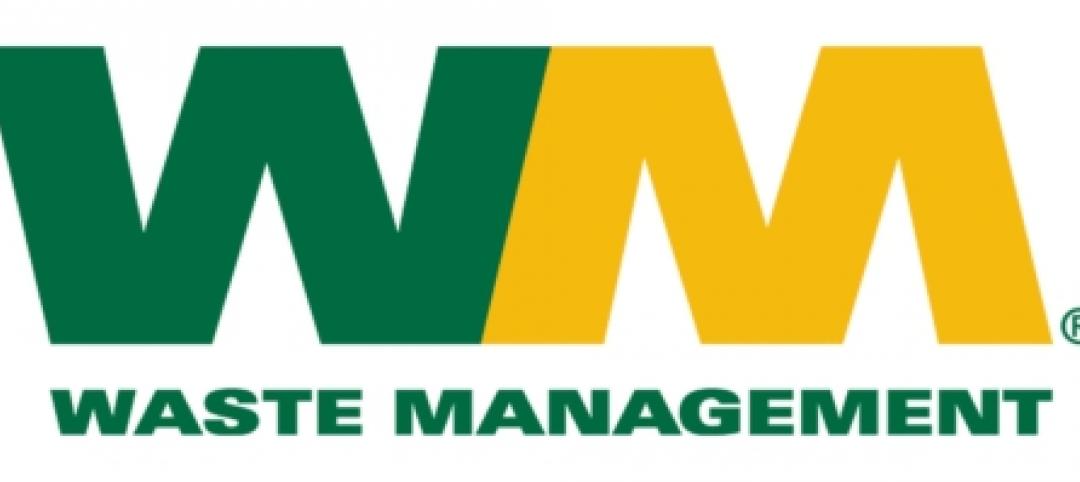When embarking upon a roofing renovation project, one of the first decisions for the Building Team is whether to tear off and replace the existing roof or to overlay the new roof right on top of the old one.
“Typically, you’re reroofing because of leaks or damage to a roof,” says Shad Traylor, AIA, CDT, LEED AP BD+C, a LEED administrator with the design-build firm BRPH, Melbourne, Fla. “A tear-off allows you to inspect the condition of the roof substrate and is more favorable for roof warranties. If the load-bearing capacity of the roof substrate is in question, a tear-off also reduces the additional weight of a second roof.”
However, if the roof has minimal water damage, he adds, reroofing with an overlayment strategy can be the quickest, least expensive, and easiest solution because it eliminates tear-off costs and reduces replacement time. “Overlayment also allows owners to maintain a weather barrier if sensitive equipment and products are installed or stored below the roof,” adds Traylor.
Analysis and testing may be needed to determine if the existing roof structure is adequate to support the added weight of an overlay. This can involve core cuts in strategic areas to analyze material conditions, as well as thermal scans and insulation tests. According to Anthony Vross, owner of Simon Roofing, Youngstown, Ohio, a rule of thumb is that if more than 30-40% of the existing roof is wet, then a tear-off is in order. The same is true in situations where the existing roof system is ponding water and it is not possible to add drains or taper insulation with the perimeters or penetrations at least eight inches higher than the primary roof surface.
In some cases, the decision on the type of reroof may be dictated by the applicable building codes. For example, where two roofing systems are already in place, most jurisdictions won’t allow the addition of a third layer of overlayment. Consequently, a tear-off or full replacement is the only allowable option.
Another instance favoring tear-off is when mechanical equipment upgrades require the roof decking to be rebuilt, in which case tear-off provides the best continuity, says Mark Yanowitz, LEED AP, Assoc. AIA, UCSL, with design-build firm Verdeco Designs, Andover, Mass. “Although there have been significant improvements in new insulation adhesives that make quality overlay roofing projects more viable, tearing off an existing older roof almost always assures a better installation and fewer problems in the future,” he adds. “This is largely because there are no unknowns with attachment issues as to how the previous roof was installed and the integrity of the overall system.”
A number of other factors need to be taken into account, including the building type, location, building usage, roof access, roof traffic, penetrations, decking, and slope.
Other techniques similar to overlayment, such as spray-applied foam products, may be viable alternatives. Another retrofit path for green building projects is the use of a “cool roof” coating, which is fluid-applied directly to the exposed roofing material. Assuming that the roof’s surface is relatively smooth, moisture is not a major concern, and decent drainage is in place, these novel, light-colored roof coatings can be a cost-effective option.
“The extra benefit is that the coating type conforms to all shapes and sizes and seamlessly seals all potential water entry points that typically leak, including flashings, termination bars, corners, pipes, and curbs and the like, which don’t always conform to the shapes of traditional roofing materials,” explains David J. Welte, President of the consulting and commercial building maintenance contractor GreenPROChicago, Lake Forest, Ill.
Vegetated or planted roof coverings may also lend themselves to part of a reroofing strategy as overlayments. For extensive, unoccupied green roofs, a common strategy is to cover existing roofs with plantings in individual trays. With some products, it’s even possible to remove the dividers between the trays, once they’ve grown, at which point they become a seamless blanket of vegetation, says Blake Jackson, LEED AP, Sustainability Practice Leader with Tsoi/Kobus & Associates (www.tka-architects.com), Cambridge, Mass.
“This type of system is most appropriate when you want to cover a surface quickly,” says Jackson. “This will contribute to earning LEED credits and help in terms of building performance and rainwater management.”
In virtually every situation, the sequencing, phasing, and coordination of the roofing work is critical to successful, watertight tear-off installations. Contractors should work from the low point to the top of the roof to prevent back-lap areas that buck water, says David Cook, AIA, Principal Architect in structural and architectural evaluation with CTLGroup (www.C-T-L.com), Skokie, Ill. In addition, sections should be worked in a strategic sequence so that workers don’t have to walk across finished work surfaces.
Protecting the substrate or deck is another key point, says Jason Hand, Vice President of roofing contractor Property Development Solutions (www.pdscompany.com), Lubbock, Texas. This also goes for the building’s contents at times when sections of the roof are fully removed.
“Weather must be tracked and precautions made to dry-in the structure at a moment’s notice,” says Hand. He, too, emphasizes the importance of staging roof work in portions. “The building assemblies should also be torn off in stages to limit exposed area in the event of unexpected precipitation,” says Hand.
Craig R. Garey, owner of roofing contractor WeatherSure Systems (www.weathersuresystems.com), Sheridan, Colo., advises going from the inside of the facility outward in identifying liabilities, risks, deck conditions, and design prior to beginning any renovation. Once a sound plan is in place, a disposal chute is the best way to transfer debris from the roof to the ground, unless the building height exceeds 120 feet.
Yanowitz is a proponent of reusing insulation and stone products to the greatest extent possible once the membrane has been removed and replaced. In cases where on-site reuse isn’t practical, trash hauling companies with off-site recycling facilities are a good option so that contractors don’t have to spend the time segregating products on site.
A roofing retrofit that involves changing a flat roof to a steep slope system can present its own set of difficulties. For starters, the structural engineer must ensure that the weight of the new roof structure meets the proper load bearings and dead-load requirements, says Simon Roofing’s Vross. The architect must verify that the building’s new look meets aesthetic and building code demands.
“Going to a steep slope from a flat roof will change the drainage design, so an engineer will need to be consulted to make sure the existing drainage system can handle the increased flow of the water entering the drains,” he explains. “Due to the amount of air space between the structure and the flat roof, the proper amount of insulation needs to be installed to meet the building code and prevent condensation.”
Related Stories
| Mar 1, 2012
Reconstruction of L.A.’s Dunbar Hotel underway
Withee Malcolm Architects’ designs for the project include the complete renovation of the Dunbar Hotel and the Somerville Apartments I and II.
| Feb 29, 2012
C.W. Driver opens new office, appoints Castillo regional SVP
Castillo will oversee projects with new and existing clients in northern California within the areas of education, healthcare/biomedical, public sector, military contracting, entertainment, retail, corporate and hospitality.
| Feb 29, 2012
Report says BIPV glass market to reach $6.4 billion by 2016
The report analyzes the opportunities for BIPV glass products using c-Si, thin-film and OPV/DSC materials and provides eight-year forecasts in terms of MW and square footage shipped as well as forecasts of revenue generated.
| Feb 29, 2012
Construction begins on Keller Army Community Hospital addition
The 51,000 square foot addition will become the home for optometry, ophthalmology, physical therapy, and orthopedics clinics, as well as provide TRICARE office space.
| Feb 29, 2012
Carvalho appointed Shawmut Safety Director
He has been a driving force behind multiple safety-orientated initiatives at Shawmut, including Safety Week, the creation of an online safety manual, and the implementation of a new safety reporting and tracking system.
| Feb 29, 2012
Shepley Bulfinch selected to design new Children’s Hospital of Buffalo
The firm was selected because of their past experience in designing clinically complex facilities that emphasize patient- and family-centered care and operational efficiency as well as distinctive architectural forms for many other children's and women's hospitals.
| Feb 28, 2012
Roofing contractors recognized for workmanship
Sika Sarnafil announces Project of the Year winners; competition highlights visually stunning, energy efficient, and sustainable roofs.
| Feb 28, 2012
Waste Management awards companies for sustainable construction
This recognition, highlighting sustainable performances within the construction industry, looks to celebrate the builders who achieved important sustainability milestones in 2011, as determined by Waste Management’s online Diversion and Recycling Tracking Tool.
| Feb 28, 2012
Salem State University Library & Learning Commons topped off
When it opens to students in the fall of 2013, the $60 million facility will offer new archival space; circulation and reference areas; collections; reading spaces; study rooms; instruction labs and a Dean’s suite.
| Feb 28, 2012
More than 1,000 have earned EDAC certification since 2009
Milestone achieved as evidence-based design becomes a top 2012 strategy for healthcare organizations.

















